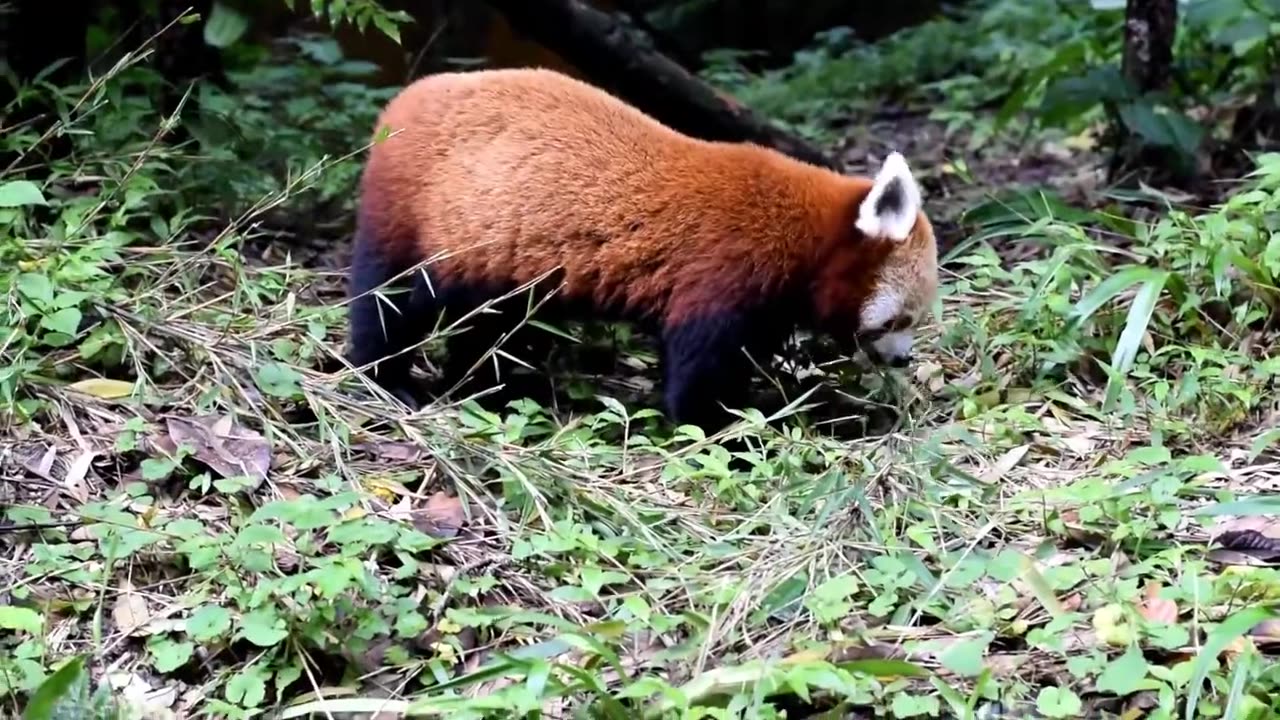Premium Only Content

About The Red Panda
The red panda, scientifically known as Ailurus fulgens but also affectionately referred to as the lesser panda, the red bear-cat, and the red cat-bear, is a captivating mammal endemic to the lush landscapes of the eastern Himalayas and southwestern China. It sports a lustrous coat of reddish-brown fur, a distinctive long and shaggy tail, and a charming waddle in its step, a result of its relatively shorter front legs. Although it shares a similar size to a domestic cat, its physique boasts a longer body and a somewhat heftier presence. This enchanting creature predominantly leads an arboreal lifestyle, relishing its diet with a primary menu of bamboo, occasionally accompanied by eggs, birds, and insects. Red pandas are often characterized as solitary beings, with their peak activity occurring during the twilight and early morning hours, while they tend to lead more sedentary lives during daylight.
Sadly, the red panda's status is one of concern, as it has earned the unsettling label of "endangered" from the International Union for Conservation of Nature (IUCN). The wild population, estimated at fewer than 10,000 mature individuals, continues to decline due to a confluence of factors including habitat loss and fragmentation, poaching, and the insidious specter of inbreeding depression. Even with protective measures in place under national laws within their respective range countries, the red panda's precarious existence remains imperiled.
Taxonomically speaking, the red panda stands as the sole living species within the Ailurus genus and the Ailuridae family. While previously associated with raccoons and bears, cutting-edge phylogenetic analysis resolutely supports its placement within the Ailuridae family, a unique classification that sets it apart from the raccoon and bear families. This family is part of the broader Musteloidea superfamily, sharing its genetic branch with fellow animal families such as weasels, raccoons, and skunks. Further distinguishing itself, the red panda is recognized through two subspecies and maintains an intriguing genetic distance from its large and iconic counterpart, the giant panda, which traces its roots to the basal ursid lineage.
-
 1:08:55
1:08:55
Donald Trump Jr.
12 hours agoGlobalist Panic & Populist Prosperity, Live with Natalie Winters & Alex Epstein | Triggered Ep229
167K105 -
 1:37:15
1:37:15
CocktailsConsoles
5 hours agoBE PART OF THE GAME!!| Death Road to Canada | Cocktails & Consoles Livestream
30.6K1 -
 1:04:29
1:04:29
BonginoReport
10 hours agoFDA Vax Pusher Needs to Look in the Mirror - Nightly Scroll w/ Hayley (Ep.16) - 03/31/2025
131K107 -
 3:27:31
3:27:31
SquallRush
1 day agoBrawlhalla Mondays!
34.5K1 -
 9:14:37
9:14:37
Misfit Electronic Gaming
9 hours ago $4.48 earned"LIVE" It's So Monday So lets Perk it up. Lets Earn Gears"Party Animals" & R.E.P.O. Who will join me????
51.4K -
 54:13
54:13
Sarah Westall
9 hours agoCIA Disclosures: Ark of the Convenient, the Pyramid Code, Ley Lines & Earth’s Energy w/ Jason Shurka
97.4K23 -
 1:16:28
1:16:28
Kim Iversen
11 hours agoThere Was No COVID Virus! How We've All Been Duped By The Medical Establishment
161K326 -
 2:58:42
2:58:42
Crossplay Gaming!
7 hours agoLet's Check Out MORE Metroid Prime Remastered! (With the RTX 5090!)
47.7K3 -
 14:24
14:24
AlaskanBallistics
15 hours ago $1.65 earnedMDT HNT26 Chassis on A Remington 700 7mm Remington Magnum
39.1K9 -
 13:34
13:34
T-SPLY
11 hours agoCNN Is Now Accusing Trump Staff Of War Crimes
59.5K26